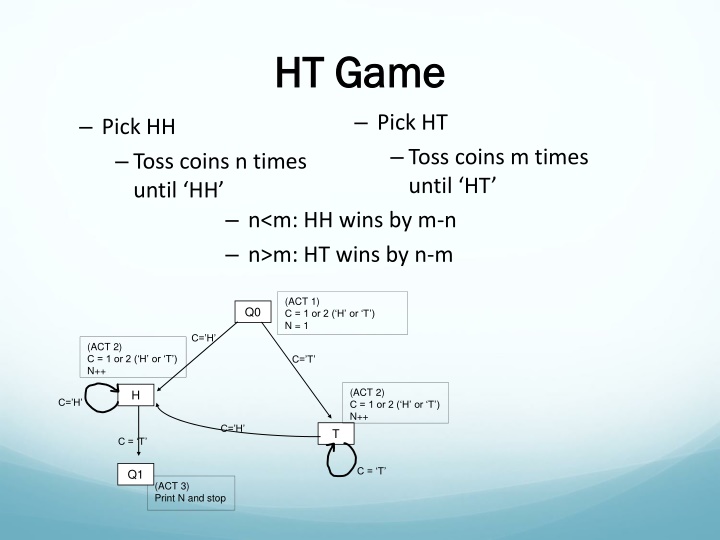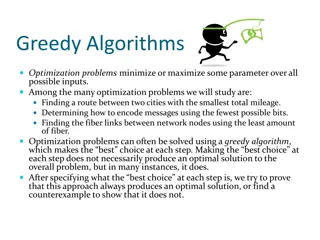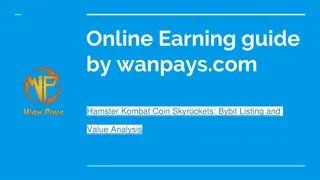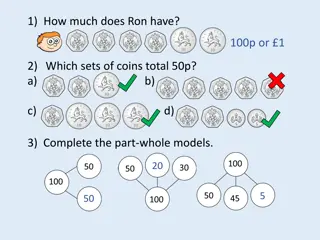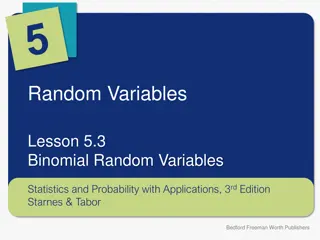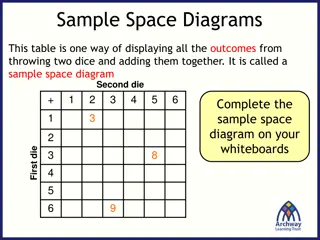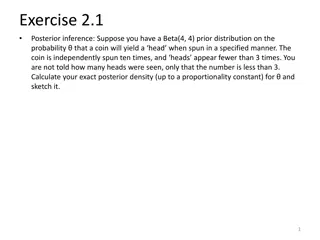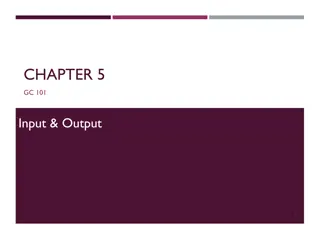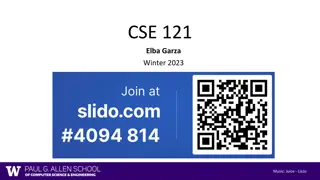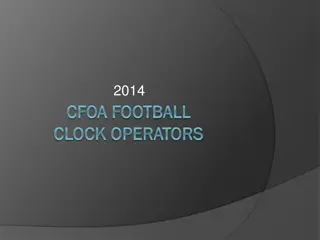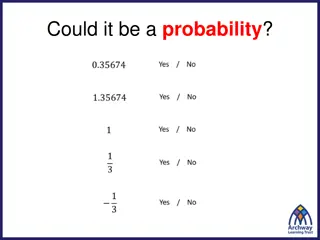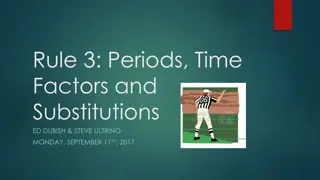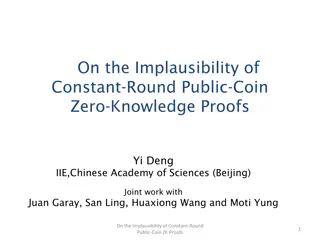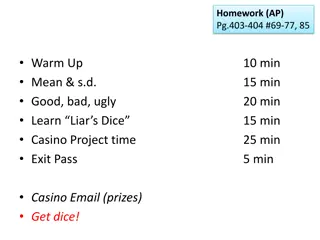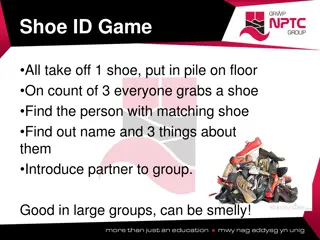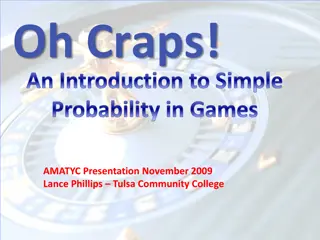Interactive Coin Toss Game with Scanner Functionality
In this interactive game, players engage in a coin toss scenario where outcomes determine wins or losses based on specific patterns. Additionally, it features a scanner functionality that processes and categorizes input strings. The game mechanics involve making choices based on coin toss results, leading to various outcomes. Images depict the game interface and scanning process, highlighting the engaging elements of the game.
Download Presentation

Please find below an Image/Link to download the presentation.
The content on the website is provided AS IS for your information and personal use only. It may not be sold, licensed, or shared on other websites without obtaining consent from the author.If you encounter any issues during the download, it is possible that the publisher has removed the file from their server.
You are allowed to download the files provided on this website for personal or commercial use, subject to the condition that they are used lawfully. All files are the property of their respective owners.
The content on the website is provided AS IS for your information and personal use only. It may not be sold, licensed, or shared on other websites without obtaining consent from the author.
E N D
Presentation Transcript
HT Game HT Game Pick HT Pick HH Toss coins n times until HH Toss coins m times until HT n<m: HH wins by m-n n>m: HT wins by n-m (ACT 1) C = 1 or 2 ( H or T ) N = 1 Q0 C= H (ACT 2) C = 1 or 2 ( H or T ) N++ C= T (ACT 2) C = 1 or 2 ( H or T ) N++ H C= H C= H T C = T C = T Q1 (ACT 3) Print N and stop
HT Game HT Game Pick HT Pick HH Toss coins n times until HH Toss coins m times until HT n<m: HH wins by m-n n>m: HT wins by n-m Q0 (ACT 1) C = 1 or 2 ( H or T ) N = 1 C= T C= H H T State\ C (ACT 2) C = 1 or 2 ( H or T ) N++ Q0 H T Q1 ACT1 ACT2 ACT2 ACT3 H H H - T T T - (ACT 2) C = 1 or 2 ( H or T ) N++ H C= H C= H T C = T C = T Q1 (ACT 3) Print N and stop
HW HW - - Scanner Scanner Act1: curChar=inBuf[j] T = charType(curChar) Input string: loop: $t1, 3 # Act2: curToken = curChar curType = T tokSpace = 7 Q0/Act1 Act3: curToken += curChar tokSpace -= 1 T=6 Q1/Act2 Act4: store curToken in tabToken clear curToken T=2 (alpha) Q5/Act1 T=1,2 T != 1,2 Q8/Act3 Q9/Act4 Q1
Scanner Scanner Act1: curChar=inBuf[j] T = charType(curChar) Input string: loop: $t1,3 # Act2: curToken = curChar curType = T tokSpace = 7 Q0/Act1 Act3: curToken += curChar tokSpace -= 1 T=6 Q1/Act2 Act4: store curToken in tabToken clear curToken T=2 (alpha) T=3,4 Q3 /Act4 Q5/Act1 Q0 T=1,2 T != 1,2 Q8/Act3 Q9/Act4 Q1
Scanner Scanner Act1: curChar=inBuf[j] T = charType(curChar) Input string: loop: $t1,3 # Act2: curToken = curChar curType = T tokSpace = 7 Q0/Act1 Act3: curToken += curChar tokSpace -= 1 T=6 Q1/Act2 Act4: store curToken in tabToken clear curToken T=2 (alpha) T=1 (digit) T=3,4 Q3 /Act4 Q5/Act1 Q2/Act1 Q0 T=1,2 T != 1,2 T=1 T != 1 Q8/Act3 Q9/Act4 Q6/Act3 Q7/Act4 Q1 Q1
Scanner Scanner Act1: curChar=inBuf[j] T = charType(curChar) Input string: loop: $t1,3 # Act2: curToken = curChar curType = T tokSpace = 7 Q0/Act1 Act3: curToken += curChar tokSpace -= 1 T=6 Q1/Act2 Act4: store curToken in tabToken clear curToken T=2 (alpha) T=1 (digit) T=3,4 T=5 (#) Q3 /Act4 Q4/Ret Q5/Act1 Q2/Act1 Q0 T=1,2 T != 1,2 T=1 T != 1 Q8/Act3 Q9/Act4 Q6/Act3 Q7/Act4 Q1 Q1
Scanner State Diagram Scanner State Diagram Act1: curChar=inBuf[j] T = charType(curChar) Input string: loop: $t1,3 # Act2: curToken = curChar curType = T tokSpace = 7 Q0/Act1 Act3: curToken += curChar tokSpace -= 1 T=6 Q1/Act2 Act4: store curToken in tabToken clear curToken T=2 (alpha) T=1 (digit) T=3,4 T=5 (#) Q3 /Act4 Q4/Ret Q5/Act1 Q2/Act1 Q0 T=1,2 T != 1,2 T=1 T != 1 Q8/Act3 Q9/Act4 Q6/Act3 Q7/Act4 Q1 Q1
HW HW - - Scanner Scanner Data Structures j inBuf tabChar tabToken curChar Token Type Token T k . . curToken curType
